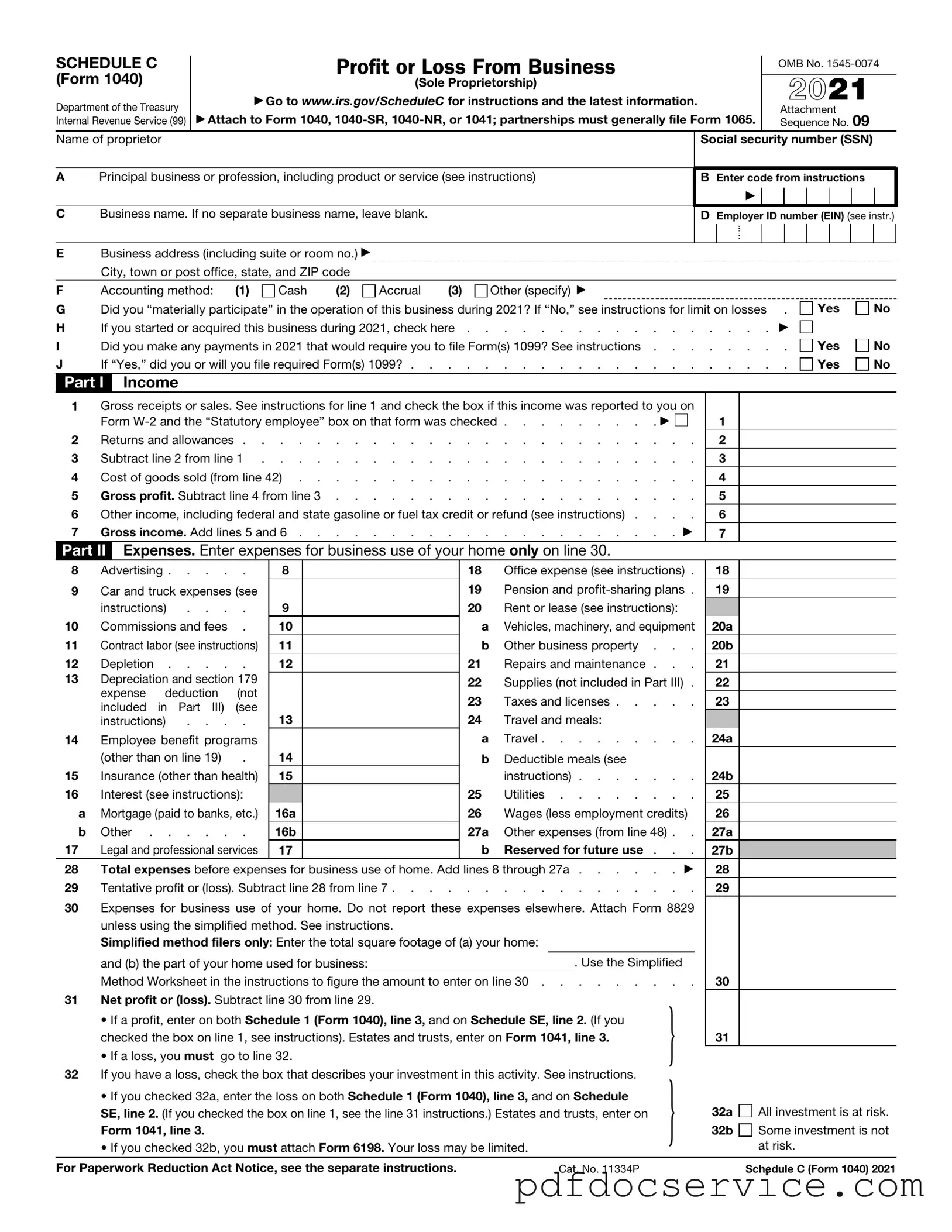For many individuals running their own businesses or engaging in self-employment, understanding the IRS Schedule C (Form 1040) is essential for accurate tax reporting. This form allows sole proprietors to report income or loss from their business activities, providing a comprehensive overview of earnings, expenses, and net profit or loss. It captures a variety of important details, such as the type of business, gross receipts, and specific deductions that can significantly impact taxable income. Common expenses reported on Schedule C include costs related to advertising, supplies, and vehicle use, among others. Additionally, the form requires careful attention to ensure compliance with IRS regulations, making it crucial for taxpayers to keep detailed records throughout the year. Filing Schedule C correctly not only helps in calculating taxes owed but also plays a vital role in establishing the financial health of a business. Understanding its components and requirements can empower self-employed individuals to navigate their tax obligations with confidence.
